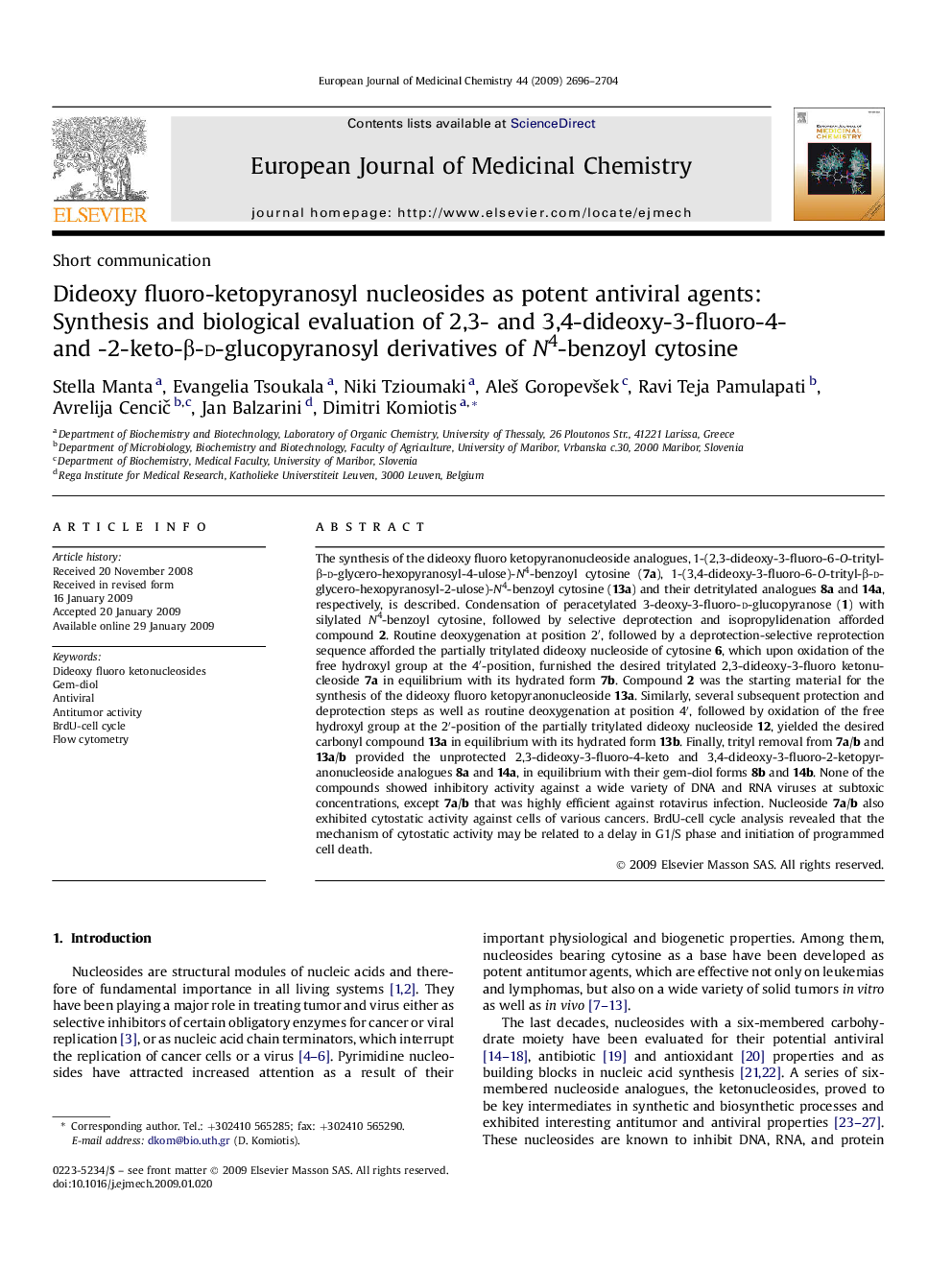| کد مقاله | کد نشریه | سال انتشار | مقاله انگلیسی | نسخه تمام متن |
|---|---|---|---|---|
| 1395075 | 1501200 | 2009 | 9 صفحه PDF | دانلود رایگان |

The synthesis of the dideoxy fluoro ketopyranonucleoside analogues, 1-(2,3-dideoxy-3-fluoro-6-O-trityl-β-d-glycero-hexopyranosyl-4-ulose)-N4-benzoyl cytosine (7a), 1-(3,4-dideoxy-3-fluoro-6-O-trityl-β-d-glycero-hexopyranosyl-2-ulose)-N4-benzoyl cytosine (13a) and their detritylated analogues 8a and 14a, respectively, is described. Condensation of peracetylated 3-deoxy-3-fluoro-d-glucopyranose (1) with silylated N4-benzoyl cytosine, followed by selective deprotection and isopropylidenation afforded compound 2. Routine deoxygenation at position 2′, followed by a deprotection-selective reprotection sequence afforded the partially tritylated dideoxy nucleoside of cytosine 6, which upon oxidation of the free hydroxyl group at the 4′-position, furnished the desired tritylated 2,3-dideoxy-3-fluoro ketonucleoside 7a in equilibrium with its hydrated form 7b. Compound 2 was the starting material for the synthesis of the dideoxy fluoro ketopyranonucleoside 13a. Similarly, several subsequent protection and deprotection steps as well as routine deoxygenation at position 4′, followed by oxidation of the free hydroxyl group at the 2′-position of the partially tritylated dideoxy nucleoside 12, yielded the desired carbonyl compound 13a in equilibrium with its hydrated form 13b. Finally, trityl removal from 7a/b and 13a/b provided the unprotected 2,3-dideoxy-3-fluoro-4-keto and 3,4-dideoxy-3-fluoro-2-ketopyranonucleoside analogues 8a and 14a, in equilibrium with their gem-diol forms 8b and 14b. None of the compounds showed inhibitory activity against a wide variety of DNA and RNA viruses at subtoxic concentrations, except 7a/b that was highly efficient against rotavirus infection. Nucleoside 7a/b also exhibited cytostatic activity against cells of various cancers. BrdU-cell cycle analysis revealed that the mechanism of cytostatic activity may be related to a delay in G1/S phase and initiation of programmed cell death.
A synthesis of the novel dideoxy fluoro ketopyranonucleoside analogues of N4-benzoyl cytosine (7a, 8a and 13a, 14a) in equilibrium with their hydrated forms (7b, 8b and 13b, 14b) is reported. 7a/b was highly efficient against rotavirus infection and exhibited high and selective antitumor activity against cells of various cancers as compared with other compounds, AZT or 5FU respectively. BrdU-cell cycle analysis revealed that the mechanism of antitumor activity may be related to a delay in G1/S phase and programmed cell death initiation.Figure optionsDownload as PowerPoint slide
Journal: European Journal of Medicinal Chemistry - Volume 44, Issue 6, June 2009, Pages 2696–2704